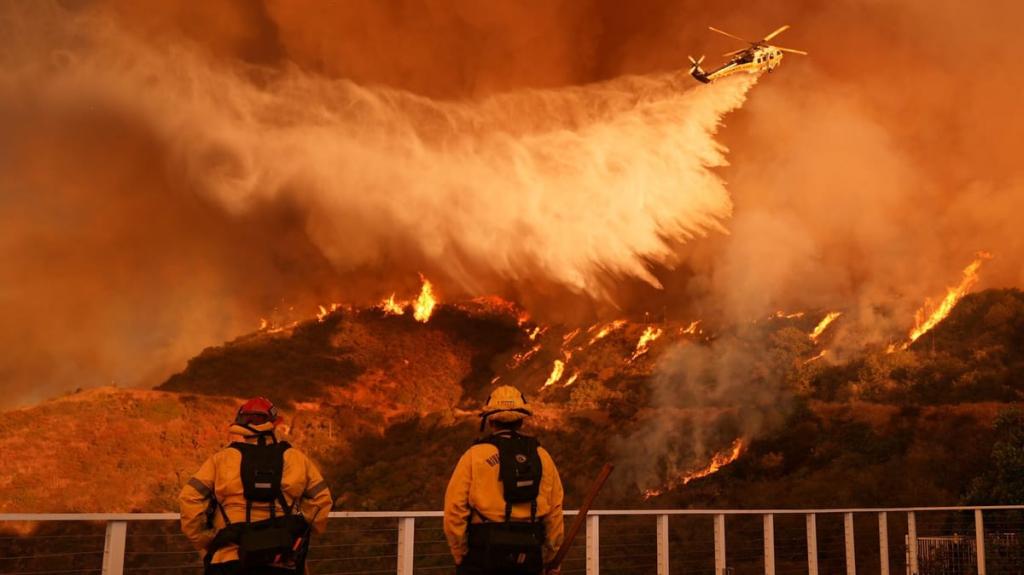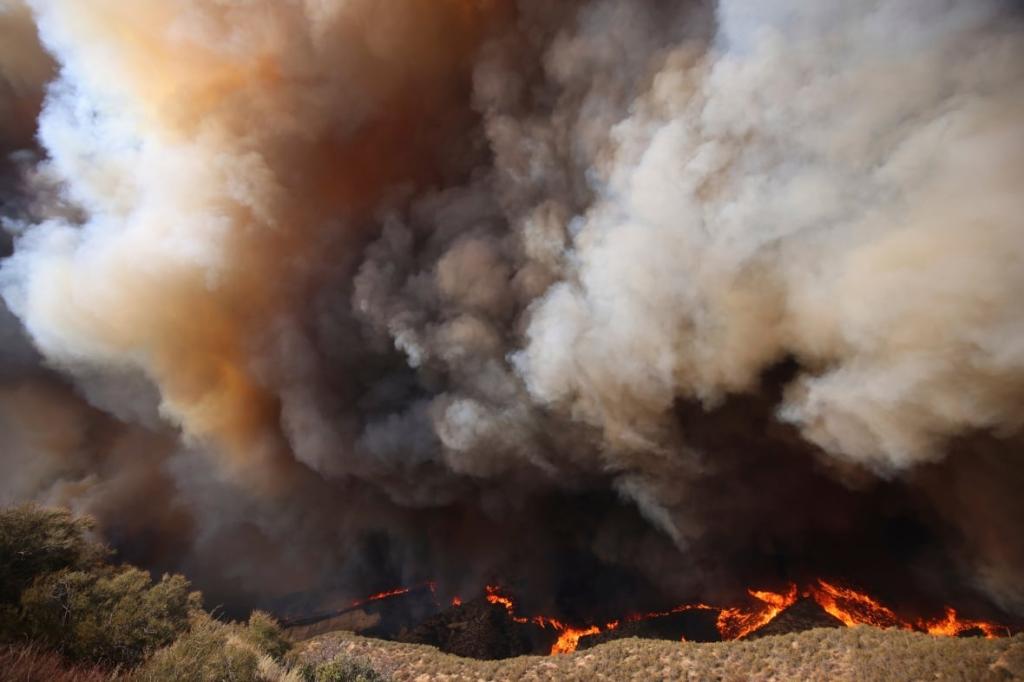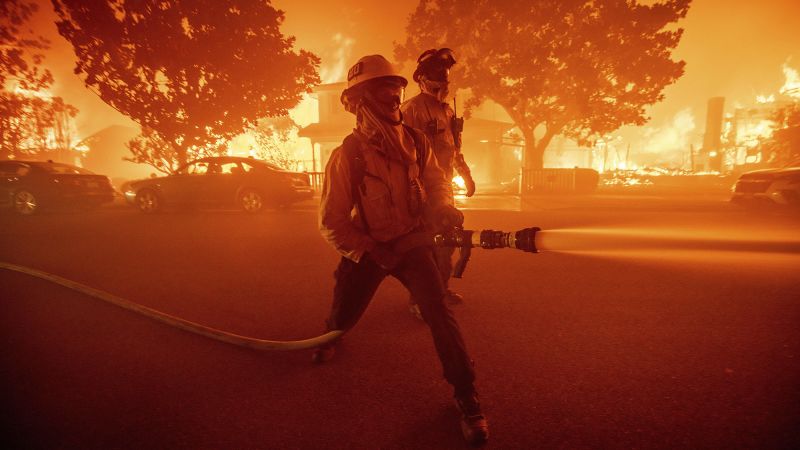Pacific Palisades Wildfire Forces Thousands to Evacuate
The Pacific Palisades wildfire has devastated homes and forced thousands to evacuate, highlighting the urgent need for wildfire preparedness in our communities.
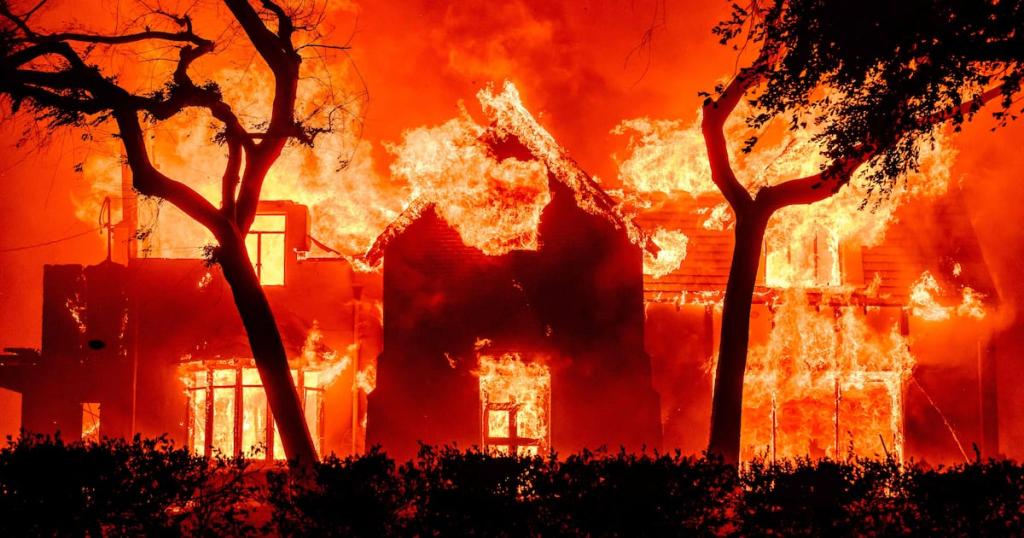
Key Points
- The Pacific Palisades
wildfire rapidly expanded, leading to the evacuation of over 30,000 residents amidst fierce
Santa Anawinds.
- Overwhelmed emergency services faced chaotic conditions as residents abandoned their vehicles and fled on foot to escape the flames.
- Community resilience and preparedness are critical in combating the increasing threat of wildfires exacerbated by climate change.
California is no stranger to wildfires, but the recent events in Pacific Palisades have escalated into a crisis that demands urgent attention. This picturesque neighborhood, known for its celebrity residents and stunning coastal views, became the epicenter of a catastrophic wildfire that rapidly spread, leading to the evacuation of over 30,000 people.
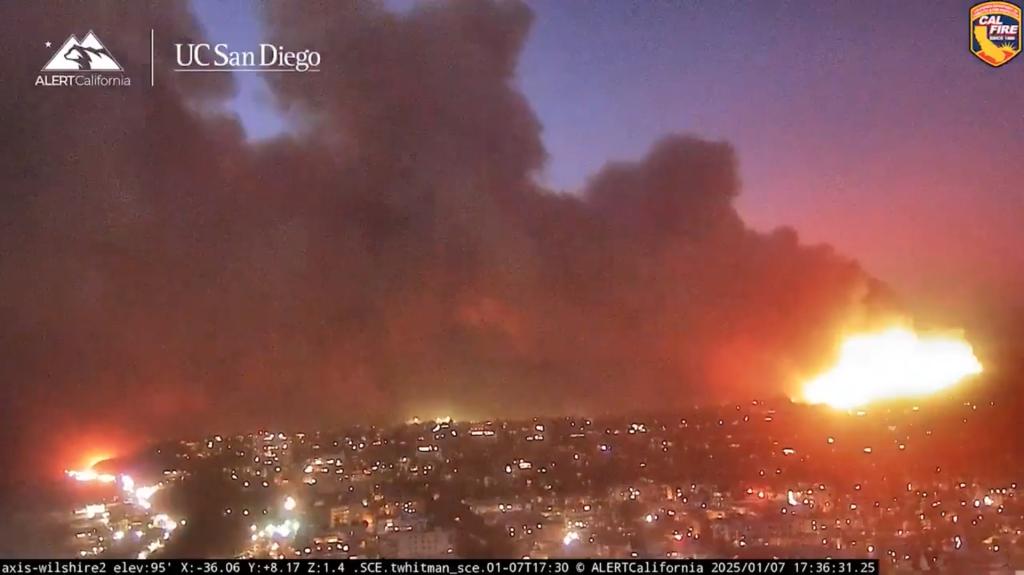
On Tuesday, the disaster began as flames erupted in the Pacific Palisades, exacerbated by the notorious Santa Ana winds, which reached speeds of up to 100 mph. These winds, characterized by their unpredictability, created a situation where the fire rapidly intensified, spreading from just a few acres to over 3,000 within hours.
The Impact on the Community
The devastation caused by the wildfire has not only resulted in the loss of homes and property but has also disrupted the lives of countless residents. Among those affected are well-known figures such as
and
, who shared their harrowing experiences on social media. Hamill described his escape as “the most horrific fire since '93”, illustrating the intense fear and urgency that characterized this disaster.
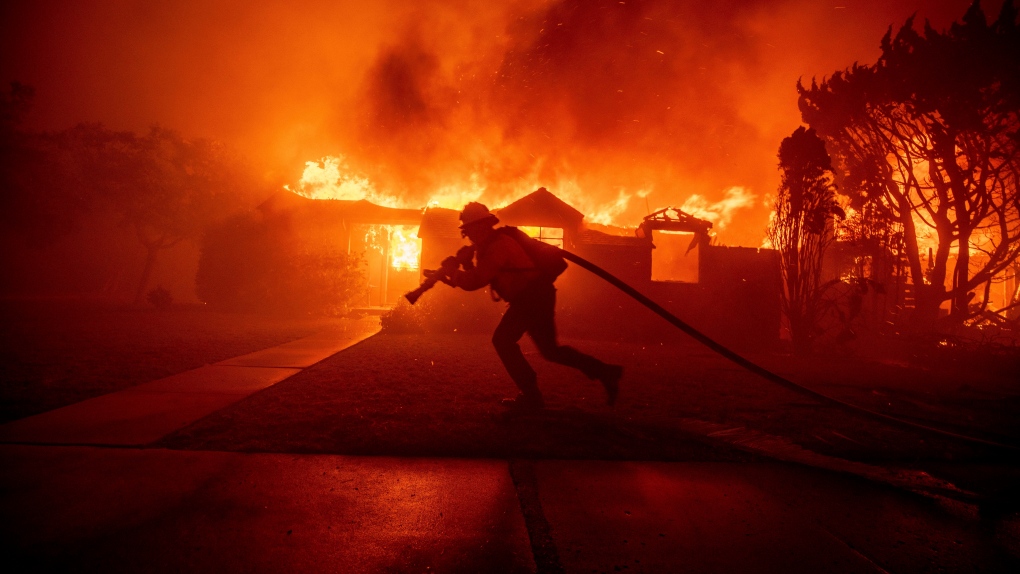
As the flames encroached upon their homes, many residents were forced to abandon their vehicles and flee on foot, encountering chaotic scenes of confusion and despair. With roads congested with fleeing evacuees, emergency services struggled to get through, highlighting the magnitude of the crisis.
A Broader Perspective on Wildfires
Wildfires are not a new phenomenon in California, but the increasing frequency and intensity of these fires can be attributed to a combination of climate change and poor forest management practices. According to the
, Irvine, wildfires in the state have worsened over the last two decades, largely due to prolonged droughts and rising temperatures.
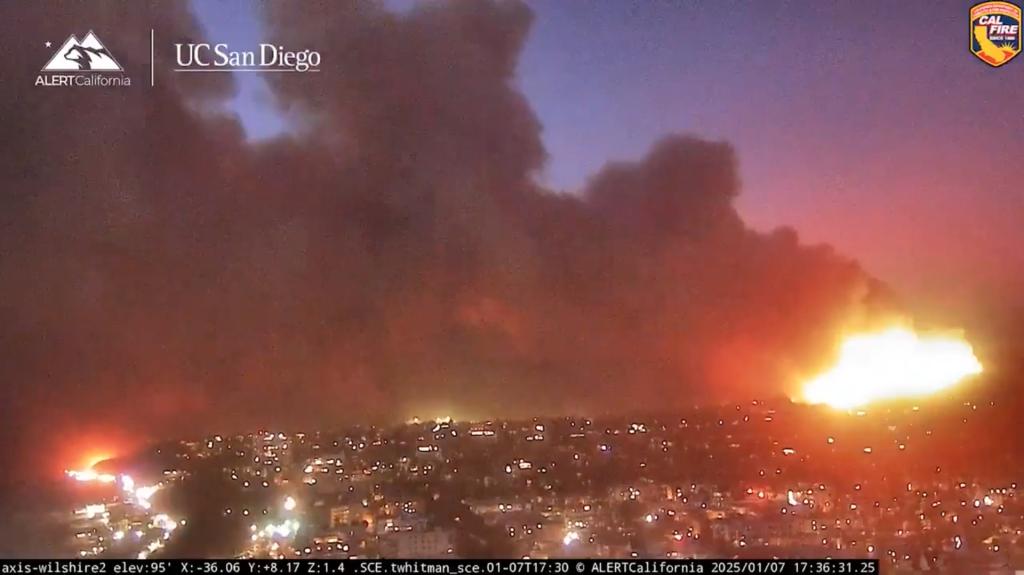
This latest wildfire serves as a stark reminder of the need for communities to prepare and adapt to the realities of a changing climate. Homeowners in fire-prone areas are increasingly urged to create defensible spaces around their properties, and local governments must invest in fire prevention and response strategies.
Efforts to Combat the Fires
The response from firefighters has been nothing short of heroic. Thousands of professionals and volunteers have mobilized to battle the flames, employing helicopters and ground crews. Emergency declarations were made, and resources are being coordinated to protect life and property in the region.
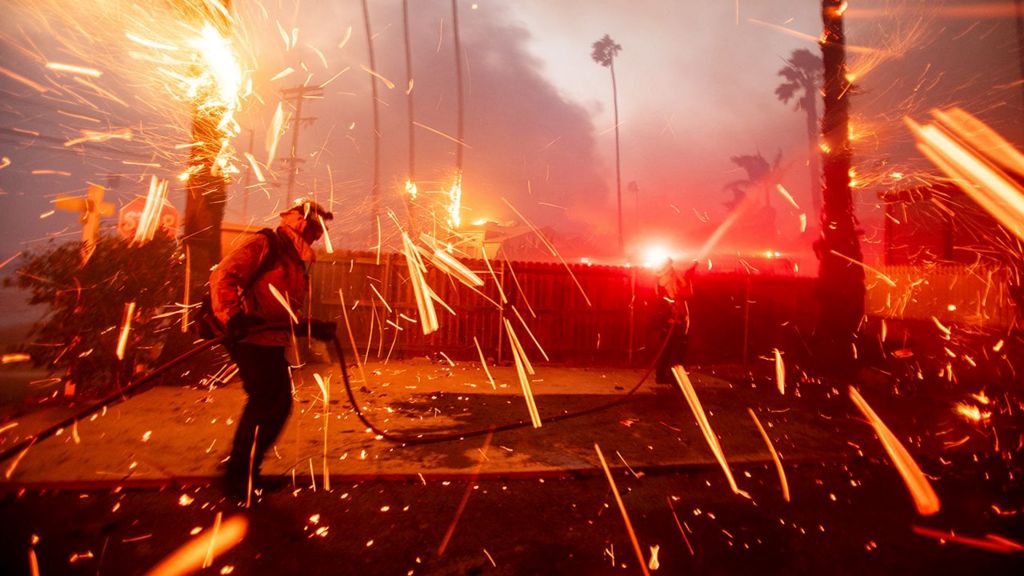
However, the situation remains precarious, with officials warning that the fire could spread into more populated areas if conditions do not improve. It’s essential for all residents in affected regions to heed evacuation orders and stay informed via local advisories.
The Aftermath and Moving Forward
While the immediate threats of the wildfire pose daunting challenges, there is a strong sense of community resolution among the residents of Pacific Palisades. Stories of camaraderie and mutual aid are emerging, with neighbors coming together to support those who have lost their homes.
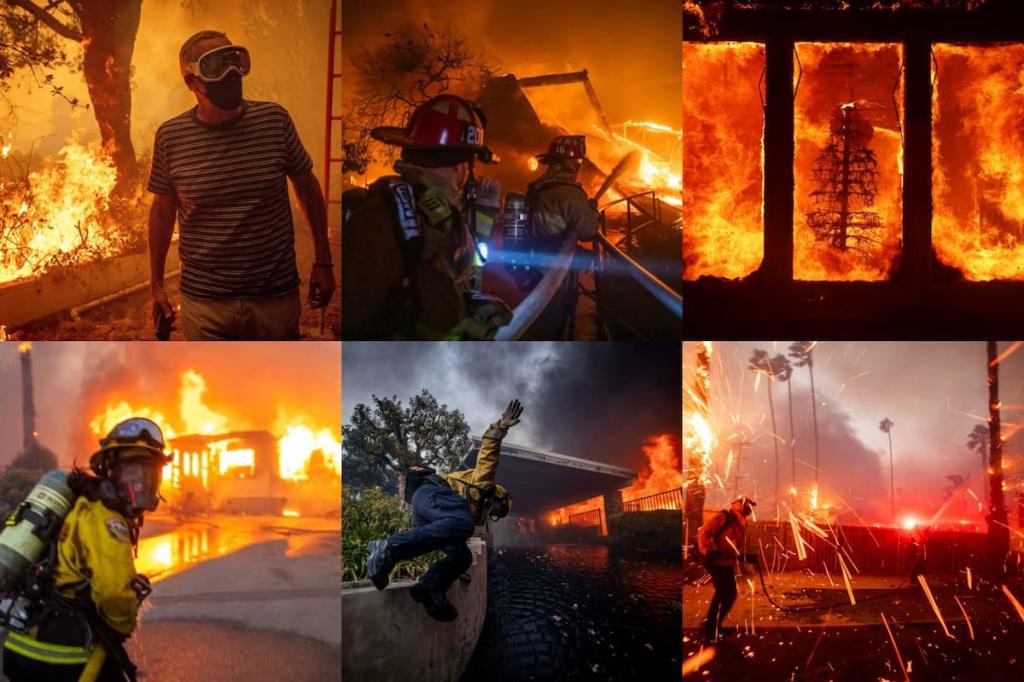
Moving forward, it is vital for residents to stay engaged and informed about wildfire preparedness efforts. This includes understanding the risk factors involved and advocating for sustainable practices that can mitigate the impact of such disasters in the future. By coming together, communities can not only recover from this devastation but also build resilience against future fires.
The Pacific Palisades wildfire serves as a critical wake-up call. Our willingness to heed these warnings, support one another, and invest in preventative measures will be key to ensuring safety and sustainability for generations to come.
